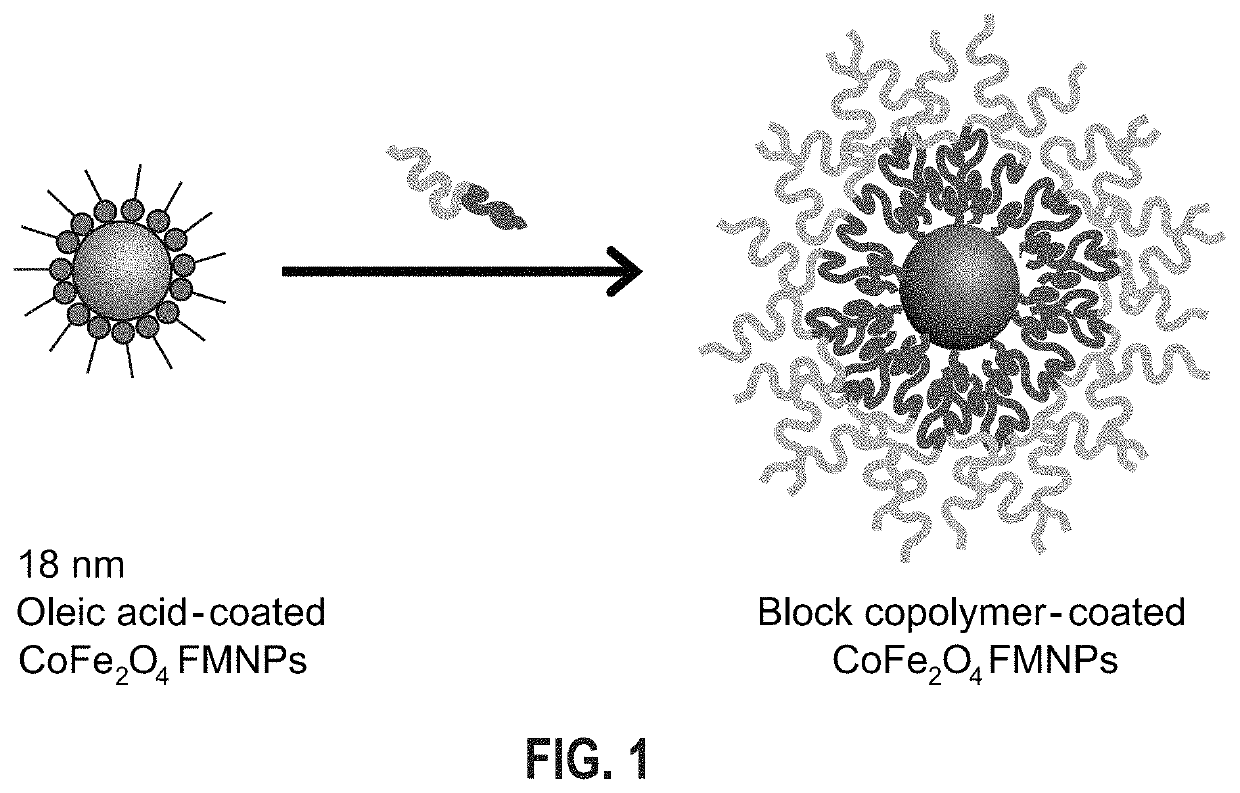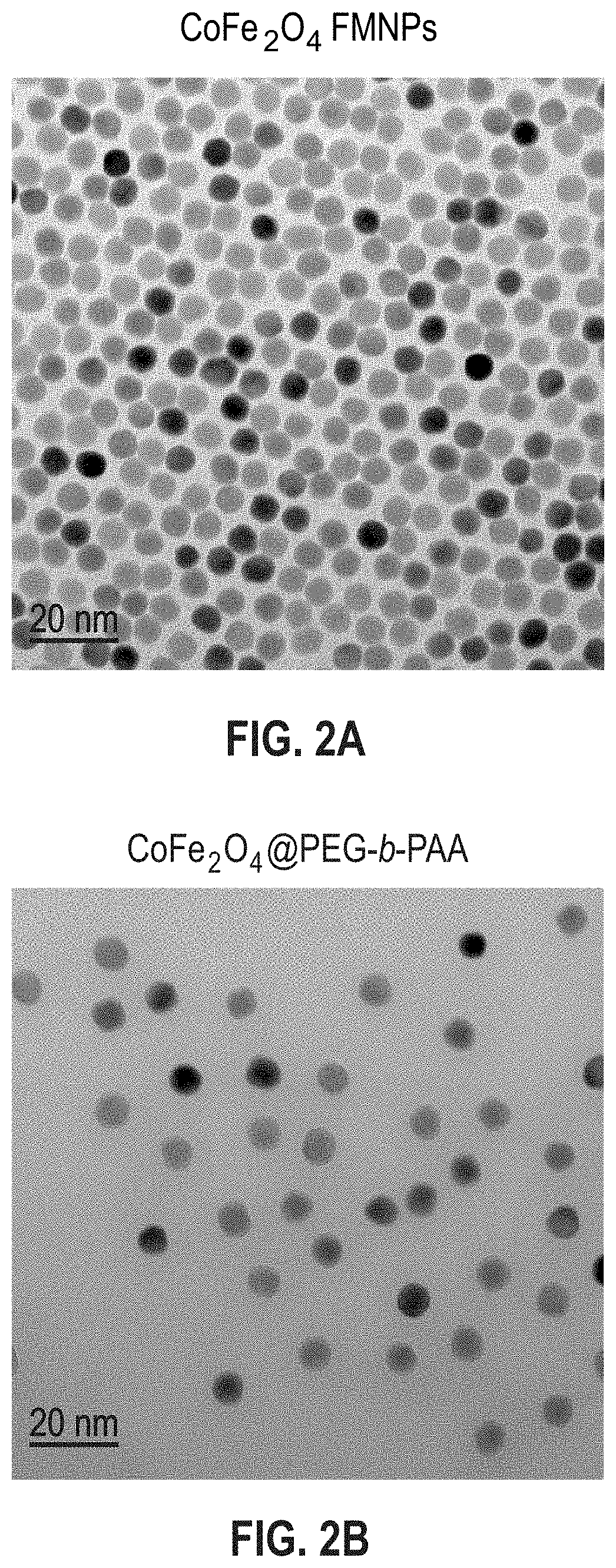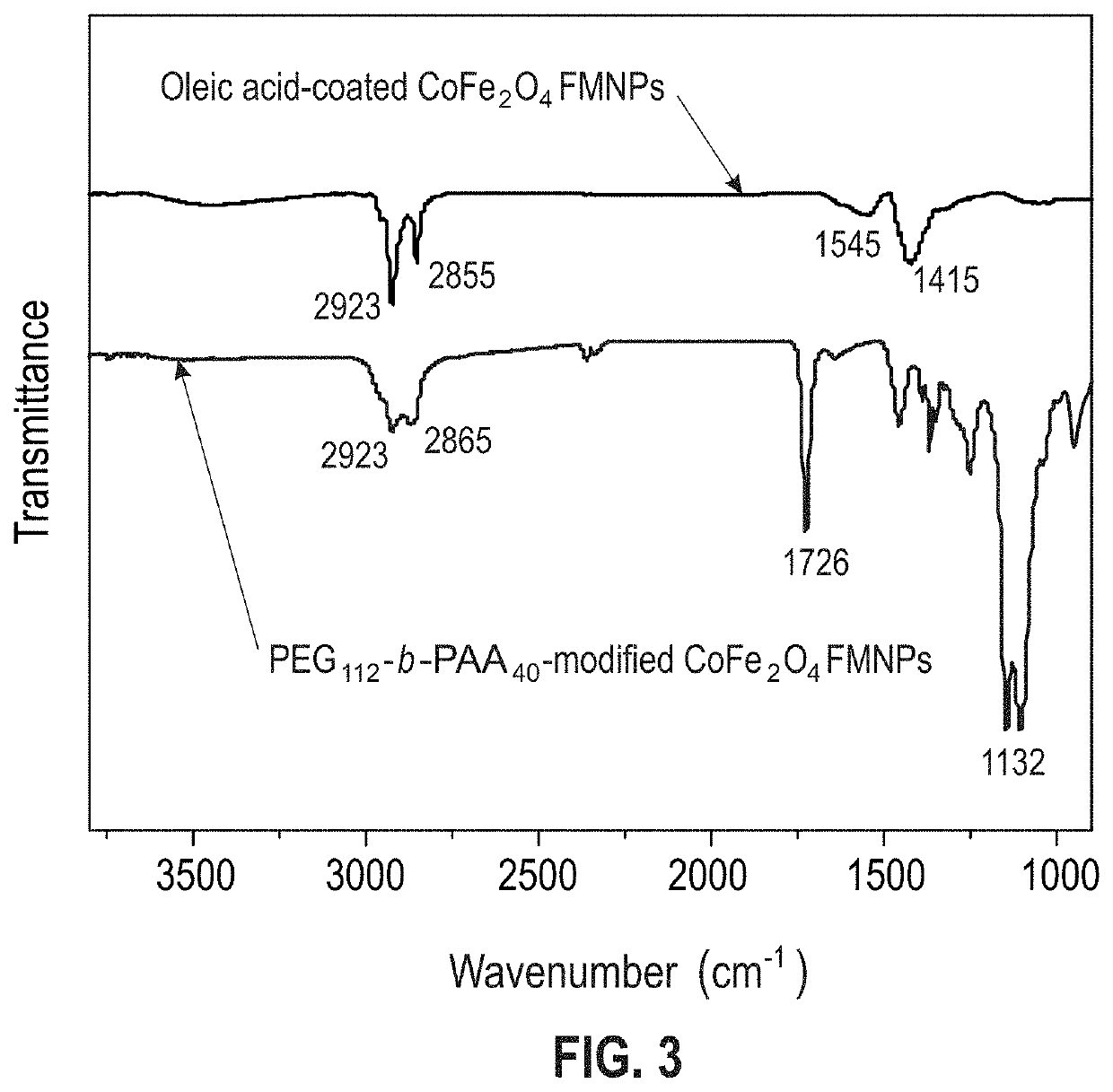Aqueous soluble ferrimagnets stabilized by block copolymers
a technology of copolymer and ferrimagnet, which is applied in the field of watersoluble block copolymermagnetic nanoparticle composition, can solve the problems of difficult to form high-quality dispersions of fmnps in physiological media for biomedical applications, particle aggregation, and inability to ensure the successful industrial application of nanoparticles
- Summary
- Abstract
- Description
- Claims
- Application Information
AI Technical Summary
Benefits of technology
Problems solved by technology
Method used
Image
Examples
example 1
Synthesis of PEG-BR Macroinitiator
[0052]PEG-OH (20 g, Mn=5 k) was dissolved in 120 mL CH2Cl2, followed by the addition of 1 mL of Et3N and 1.1 mL of 2-bromisobutyryl bromide. The reaction mixture was stirred at ambient temperature for 2 d then passed through 0.2 μm filter. The solution was subsequently extracted with 100 mL of deionized H2O, 1 M HCl, and 1 M NaHCO3 and then dried using MgSO4. The product was precipitated in Et2O and dried overnight under vacuum.
example 2
Synthesis of PEG-b-PAA Diblock Copolymer
[0053]The macroinitiator PEG-Br (5.3 g) plus CuBr (150 mg), t-butylacrylate (4.5 mL), and anisole (20 mL) were added to a Schlenk flask and the solution was degassed three times via freeze-pump-thaw cycles. PMDETA (0.25 mL) was added to the solution and the reaction mixture was heated at 90° C. for 5 h. The reaction was stopped by submersing the flask in liquid N2 and the reaction solution was passed through an Al2O3 column to remove the Cu catalyst. The polymer solution was precipitated twice in Et2O to remove the unreacted monomers and then dried overnight under vacuum. Mn=10.9 k; PDI=1.05. The PEG-b-PtBA (1.2 g) was dissolved in CH2Cl2 (10 mL), and a five-fold molar excess of trifluoroacetic acid (with respect to the t-butyl groups) was added to the solution. The solution was then stirred at room temperature for 24 h. The resulting PEG-b-PAA diblock copolymer was precipitated from hexane and dried under vacuum.
example 3
Synthesis of BocNH-PEG-Br Macroinitiator
[0054]BocNH-PEG-OH (1 g, Mn=5 k) was dissolved in 25 mL CH2Cl2, followed by the addition of Et3N (150 μL, 1 mmol) and 2-bromisobutyryl bromide (180 μL, 1 mmol). The reaction mixture was stirred at ambient temperature for 2 d then passed through 0.2 um filter. The solution was then extracted with 50 mL of deionized H2O, 1 M HCl, and 1 M NaHCO3 and dried with MgSO4. The resulting product was precipitated in Et2O and dried overnight under vacuum.
PUM
| Property | Measurement | Unit |
|---|---|---|
| temperatures | aaaaa | aaaaa |
| temperatures | aaaaa | aaaaa |
| temperatures | aaaaa | aaaaa |
Abstract
Description
Claims
Application Information
 Login to View More
Login to View More - R&D
- Intellectual Property
- Life Sciences
- Materials
- Tech Scout
- Unparalleled Data Quality
- Higher Quality Content
- 60% Fewer Hallucinations
Browse by: Latest US Patents, China's latest patents, Technical Efficacy Thesaurus, Application Domain, Technology Topic, Popular Technical Reports.
© 2025 PatSnap. All rights reserved.Legal|Privacy policy|Modern Slavery Act Transparency Statement|Sitemap|About US| Contact US: help@patsnap.com



